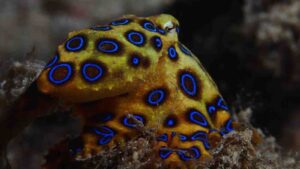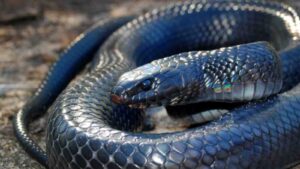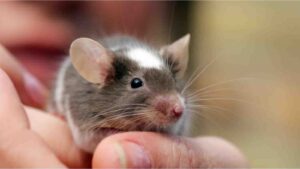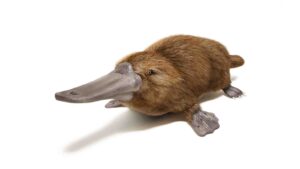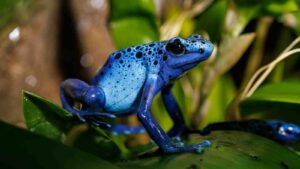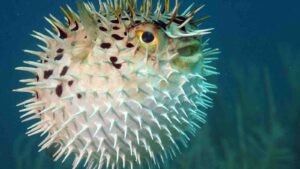Cute animals that can kill you
Summary
Ultimate Fact presents the top 10 cute animals that can kill you. Before we begin, click that like button to inspire us. Also, subscribe to our channel and click the notification bell to be inspired by this type of ultimate […]

Ultimate Fact presents the top 10 cute animals that can kill you. Before we begin, click that like button to inspire us. Also, subscribe to our channel and click the notification bell to be inspired by this type of ultimate fact.
Who doesn’t love adorable, cute, snuggly animals? What if your fluffy, squishy pet is the reason for your harm? You might like to hug them, but this could probably be your last breath. We’re going to ruin your image of some of Mother Nature’s. Here are the top ten cute yet dangerous animals that can kill you.
Video: Cute animals that can kill you
Blue ring octopus:
While diving in the deep-sea water, you can see a perfectly innocuous blue ring octopus. Don’t let its cuddly exterior fool you. This tiny octopus can kill you quickly.
Although all octopuses are venomous, the blue-ringed octopus is in a league of its own. Its venom is 1,000 times more powerful than cyanide. This golf ball-sized powerhouse packs enough venom to kill 26 humans within minutes. It’s no surprise that it’s recognized as one of the most dangerous animals in the ocean.
Since the blue-ringed octopus is not an aggressive marine animal, most cases of bites are from a person picking up and handling the octopus or stepping on it in a sandy beach area. To avoid being bitten by a blue-ring octopus, you should never pick up or handle this marine animal. When entering the ocean, shuffle your feet as you enter to avoid stepping on the ocean.
Luckily, in Perth, Australia, a fisherman has survived after being bitten by one of the most venomous creatures in the ocean, the blue-ringed octopus.
Indigo:
Holding into this might make you look brave on social media. Trying to take a photo with this “non-venomous creature” can bite you anytime.
Not talking about the airplane, the Indigo snake has strong venom and is also known as the largest snake in the world. An Indigo snake is quite capable of latching onto a rattlesnake and subduing it long enough to suffocate and then swallow it.
Indigo snakes can actually kill human beings by biting or stinging. During twenty-five years of its lifespan, it can mostly reproduce from June to August. It’s wise to stay far away from them. Surprisingly, it is illegal to harm or kill Indigo snakes in the state of Texas. It is one of a few serpents that enjoy a certain amount of protection by law.
Video: Cute animals that can kill you
Bottlenose dolphin flipper:
Though dolphins look cute and movies, television, and aquarium water shows feature their antics, those playful models of animal wisdom, celebrated for protecting shipwrecked sailors and spending their days frolicking happily in the waves, can kill you.
They have high intelligence, which unfortunately sometimes results in harm. They don’t kill humans often, but we recommend thinking twice before approaching dolphins, especially in the wild, unlike previous animals that we told you about. They might even attack you without any good reason.
Following a trail of bloody clues, scientists are discovering that dolphins are far from the happy, peaceful creatures that humans think they know. Federal officials worry about dolphins’ injuries or even killing humans, especially during watching, feeding, and swimming programs. People have been pulled under water. Scary, right? It is.
Kitten:
They try tripping you. They try suffocating you in your sleep. They are so cute that it could kill you. Anyone who has a cat knows—at some point or another—that they are at the receiving end of their claws. The scratch usually disappears in a few days.
The Center for Disease Control is warning cat owners to be on guard. Cuddling a kitten could give pet owners a life-threatening infection. Cat Scratch Disease is an illness that can cause an intense fever and result in death.
Caused by bacteria and transmitted from cat to cat by fleas, the disease can be contracted by people who kiss or nuzzle their cats, or by being scratched or bitten by them. Doctors have recommended that cat owners always wash their hands after stroking their pet. Avoid any contact between their animals and stray cats. Parents have been advised to discourage their children from kissing and roughplaying with kittens in households with both cats and young children.
Those who already have a repressed immune system from other illnesses are more at risk of contracting cat scratch disease. From 2005 to 2013, national health insurance claims that 12,000 patients, aged 65 and younger, are diagnosed with Cat Scratch Disease. They also discovered that the illness requires about 500 hospitalizations annually. So while you are still more likely to die in a car accident than dying in a hospital from cat scratch fever, it does happen, and obviously you don’t want to become any part of this.
Read More: Weapons of the Future
Mice:
Cartoon character Mickey Mouse is cute and funny, but a mouse in real life is a key contributor to spreading diseases and bacteria, which can be risky and potentially lethal to humans. Eventually, that factor will kill you in the longer term.
Mice do not generally bite, but the biggest problem that turns them from nuisance to danger is the health risks they bring with them from diseases and parasites. Rats spread disease through their saliva. You don’t have to be bitten or scratched by an infected rat to get rat bite fever. Their urine can also cause dangerous allergic reactions.
Also, rats like to spend time in house attics. They often chew through electrical cables near wood beams. A fire can start, putting your house at risk. It’s wise to buy mousetraps to get rid of mice from your home to avoid fever, infections, or any kind of life-threatening disease.
Platypus:
Looking like a fruitcake, it’s one of the few living mammals to produce venom. While the venom’s effects are described as excruciatingly painful, it is not lethal to humans.
Scientists have just determined that the platypus’ venom contains over eight different toxins in 13 different classes. The poison can kill small animals and leave humans in pain for weeks. Male platypuses have a poison apparatus on their hind legs. There are poison glands in the thighs and a hollow spur near the heel. If that pain lasts for longer, it might result in death.
Dart frog:
Did you think that a frog would be on the list? Dart frogs look adorable, but within their skin glands, they store an alkaloid toxin called batrachotoxin. A good amount of it, on average, is enough to kill ten human beings. If the poison enters your bloodstream, you’ll likely be dead in less than ten minutes.
The golden poison frog has no such limitations. It keeps its poison in glands beneath its skin; any reckless human taking a bite would be in trouble immediately. According to a study published in 1998, even tiny amounts of epibatidine can cause severe damage to an animal’s brain and muscles. This can lead to respiratory paralysis, high blood pressure, seizures, and death. It’s not just adult frogs that are poisonous. Baby frogs are too.
The most dangerous kind is the golden frog. Please keep this rule in mind while you’re traveling in wild nature.
Puffer fish:
Is it safe to touch a pufferfish? If a fisherman catches a pufferfish, they will never touch the spikes, as they are highly toxic to humans and animals. The amount of toxin in a pufferfish is enough to kill thirty human beings. The pufferfish has the remarkable ability to expand its body extremely quickly when faced with danger, unveiling its long poisonous spikes that cover its body.
The toxin is mostly internal, but it does reside on their skin and spines. To give you an idea of the toxicity, it is 1200 times more poisonous than cyanide. Each year, dozens of adventurous human diners are stricken with pufferfish poisoning. Almost all pufferfish contain tetrodotoxin, a substance that makes them foul-tasting and often lethal to fish.
Amazingly, the meat of some pufferfish is considered a delicacy. Called fugu in Japan, it is extremely expensive and only prepared by trained, licensed chefs who know that one bad cut means almost certain death for a customer. In fact, many such deaths occur annually. A famous Kabuki actor died after eating fugu liver. If you want to try this meal without it being your “Last Supper,” go to a very good restaurant.
Wolverine:
When you hear the word “wolverine,” chances are the first thing that pops into your mind is the super buff, clawed comic book character. This depiction isn’t far off from the actual animal, a weasel that also has some pretty sharp claws.
Once hunted nearly to extinction for their fur, wolverines have rebounded and are currently a species of least concern. Still, that doesn’t mean they’re easy to find. These animals are elusive, and there’s much about them that remains mysterious, but here are a few things we do know. They are made for cold weather and have great noses. Wolverines can smell prey, even when buried under twenty feet of snow. They have even been known to find and kill animals that are in hibernation.
Humans are not out of danger from wolverines because they can travel incredible distances. When looking for food, wolverines can cover as many as fifteen miles in a single day. In the United States, these mostly solitary creatures wander a territory of forty-seven square miles. In Scandinavia, they roam territories that stretch over more than 270 miles. That’s nothing compared to the distance one wolverine covered in 2009. Scientists figured out that the animal, which was spotted in Colorado, had ventured over 500 miles from its home in Wyoming. So if you see any wolverine around you, run fast and call for help.
Read More: 20 Most Expensive Dog Breeds in the World
Slow Loris:
Not everything is as it seems in the wild because the ugly ones may be safe and the beautiful ones can be deadly. The slow loris may appear “cute” to human eyes, but it has a toxic bite. People may cover viral videos of pet lorises being tickled or eating rice balls, but the backstory behind those social media images is far from cute.
If you’ve ever heard of the slow loris, it’s likely for all the wrong reasons. Slow lories are nocturnal animals. They can’t express natural behaviors in captivity. In the wild, they travel long distances at night in their search for food.
Usually, a slow loris’ teeth are clipped, but if their teeth are still intact, they mix venom secreted from a gland inside their upper arm with saliva to deliver a venomous bite. This can cause anaphylactic shock and even death in humans.
In the wild, the slow loris would feed on a complex diet of fruits and insects; owners often struggle to meet these special dietary needs. This leads to obesity as well as other serious health problems, including infection, pneumonia, diabetes, metabolic bone disease, and malnutrition. It’s illegal in many countries to keep a slow loris as a pet. Most countries have rules against the purchase of exotic species, including the slow loris. It is highly doubtful that any slow loris would be being kept as a pet legally.
Have you ever been infected by your pet, or would your dog ever bite you? Let us know in the comment section.
That is all for now. Like always, if you enjoyed it, be sure to give us a big thumbs up. To keep up-to-date with all of our awesome videos, be sure to hit the subscribe button and turn on your notifications. Until next time, do take good care of yourself.
